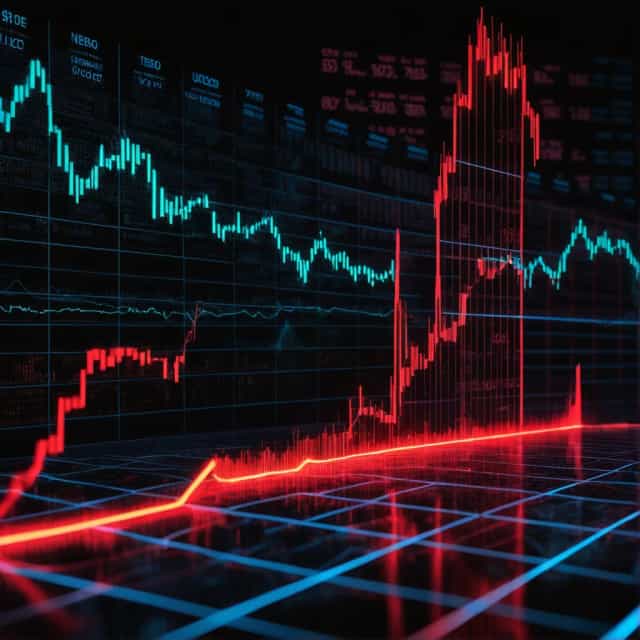
Image source: Block Media
Gold Futures Skyrocket Past $4,100: A Monumental Leap Amid Global Asset Realignment
Gold futures have shattered the $4,100 threshold for the first time in history, marking an unprecedented milestone for the precious metal. This surge highlights a growing shift in global asset preferences as investors, central banks, and institutions pivot toward gold as the ultimate safe-haven asset. The trend emerges against the backdrop of steep declines in foreign holdings of U.S. Treasuries, signaling a remarkable transformation in reserve asset allocations worldwide.
According to TradingView data recorded at 5:50 p.m. on October 14, gold futures (Comex continuous front-month contracts) were trading at an astonishing $4,128.9, reflecting an increase of $128.5, or 3.21%, from the previous session’s close. Over the past month alone, gold prices have surged by 12.4%, while year-to-date returns now stand at an eye-popping 56.32%, underscoring gold’s dominance in 2023.
The Structural Dynamics Powering Gold’s Rally
The current gold rally extends beyond transient geopolitical risks, instead reflecting profound and sustained structural shifts in global financial systems. According to the macroeconomic insights firm Koveysi Letter, central banks worldwide are intensifying their gold acquisitions at an accelerated pace. Concurrently, foreign investors have sharply reduced their holdings of U.S. Treasuries, a move further bolstering gold’s stature as a premier safe-haven asset.
Compelling data from the International Monetary Fund (IMF) and the U.S. Department of the Treasury quantifies this transition. The proportion of gold in central banks' official reserve portfolios is rising rapidly, with gold reserves surpassing foreign holdings of U.S. Treasuries for the first time in history—a dramatic reversal of traditional investment patterns. The share of foreign-owned U.S. Treasuries has plummeted from 49% in 2013 to just 31% in the present, widening the gap between Treasury holdings and gold reserves at an accelerating pace.
Waning Confidence in U.S. Fiscal Stability Drives the Shift
At the core of this unprecedented shift lies a growing erosion of confidence in the fiscal and monetary policies of the United States. Analysts point to persistent money printing by the Federal Reserve, mounting skepticism surrounding America’s fiscal discipline, and an accelerating global trend of de-dollarization as key drivers behind this phenomenon.
Gold, historically positioned as a hedge against inflation, has now evolved into a cornerstone asset amid increasing concerns over the sustainability of the U.S.-centric global financial architecture. Investors are increasingly viewing gold as a stabilizing force during what many predict could be a significant overhaul of the international monetary system.
Bitcoin’s Role in the New Order: The Rise of “Digital Gold”?
As gold prices reach unprecedented levels, attention has also turned to Bitcoin (BTC), frequently referred to as “digital gold.” Investors are exploring Bitcoin as a supplementary store-of-value asset and a potential hedge alongside physical gold. This rising interest in cryptocurrency represents a broader search for alternatives to traditional financial instruments amidst dramatic shifts in global asset allocations.
While Bitcoin’s volatility contrasts sharply with gold’s stability, the cryptocurrency market could still gain momentum from these macroeconomic dynamics. Observers suggest that Bitcoin might benefit from a spillover effect as more investors diversify their portfolios with hedging strategies that extend beyond traditional safe-haven assets.
Conclusion: Gold’s Ascent Signals a Paradigm Shift
The meteoric rise of gold prices past $4,100 underscores a broader transformation in investor behavior, influenced by concerns over U.S. fiscal policies, de-dollarization, and changing reserve compositions. As central banks and institutions continue to expand their gold holdings, the metal’s safe-haven status is further amplified within an evolving global financial order.
This shift also opens the door for potential alternatives such as Bitcoin to gain recognition as complementary assets during this period of monetary realignment. With gold setting new records and redefining its role, the implications for the broader financial system—and alternative asset classes—are profound, signaling an era of change in global asset preferences.










